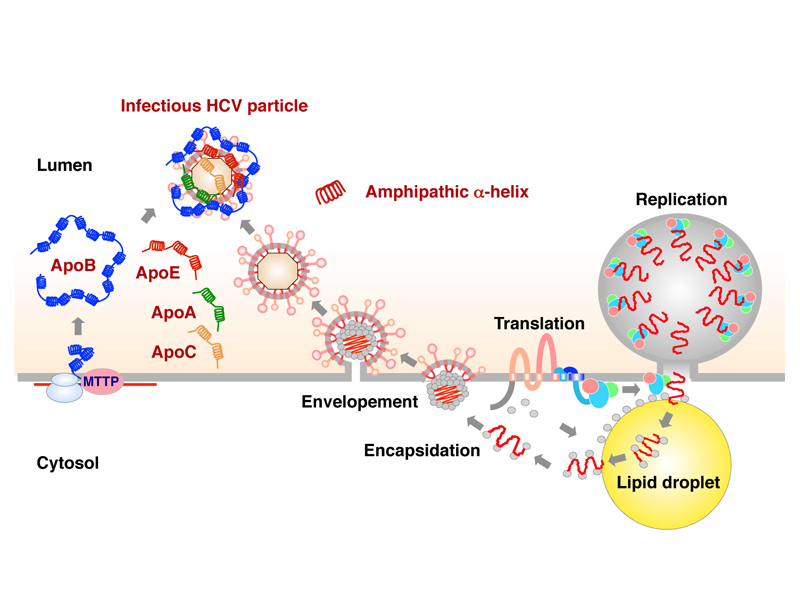PLoSPathogens 10(12): e1004534 2014/12/11
Hepatitis C virus (HCV) is a causative agent for liver diseases including steatosis, cirrhosis and hepatocellular carcinoma. In vitro systems have been developed for the study of HCV infection and have revealed many details of the life cycle of HCV. Apolipoprotein B (ApoB) and ApoE have been shown to play crucial roles in the particle formation of HCV, based on data obtained by siRNA-mediated gene knockdown and overexpression of the proteins. However, precise mechanisms of HCV assembly have not been elucidated yet. In this study, we showed that particle formation of HCV in Huh7 cells was severely impaired by the knockout of both ApoB and ApoE genes by artificial nucleases. cDNA microarray analyses revealed that ApoB and ApoE are dominantly expressed in Huh7 cells, in contrast to the high level expression of all of the exchangeable apolipoproteins, including ApoA1, ApoA2, ApoC1, ApoC2 and ApoC3 in human liver tissues. The exogenous expression of not only ApoE, but also other exchangeable apolipoproteins rescued the infectious particle formation of HCV in the ApoB and ApoE double-knockout cells. In addition, expression of amphipathic α-helices in the exchangeable apolipoproteins restored the infectious particle formation in the double-knockout cells through an interaction with viral particles. These results suggest that HCV has come to utilize abundant apolipoproteins for efficient production of infectious particles through the adaptation of HCV to the liver, and expression of apolipoproteins participates in liver tropism of HCV.
Links
- Home
- Achievement
- Research Activities
- PLoSPathogens 10(12): e1004534 2014/12/11








